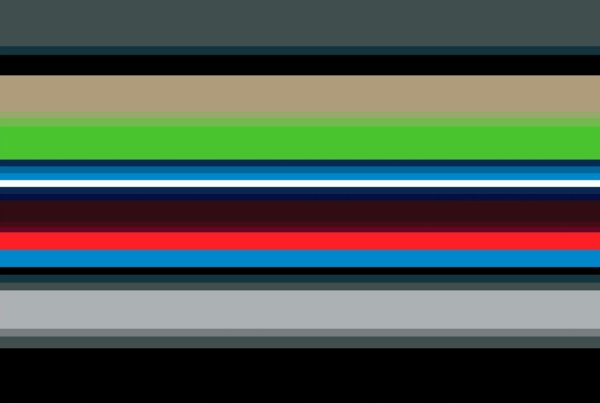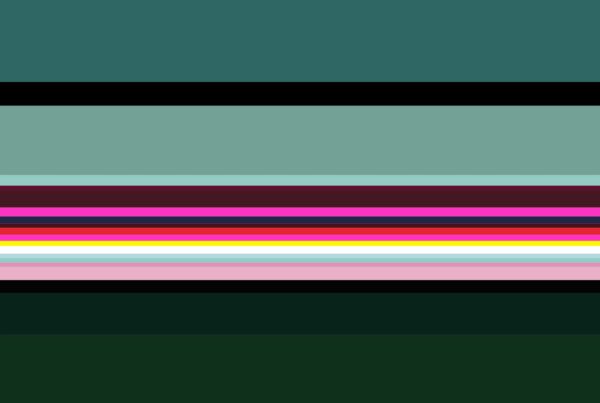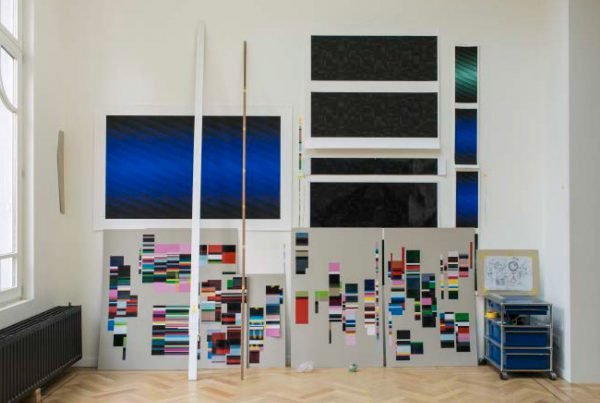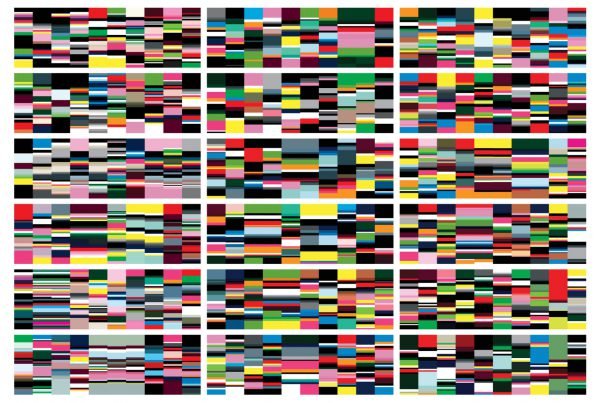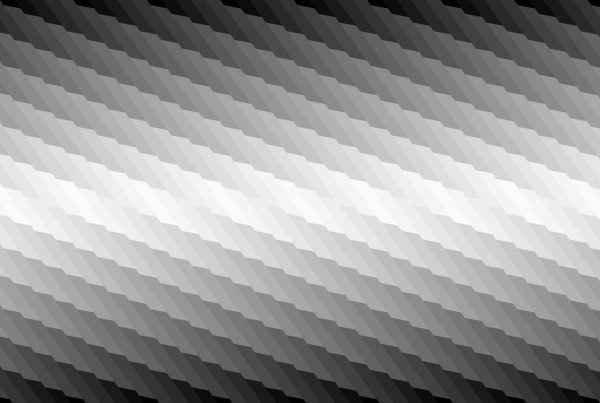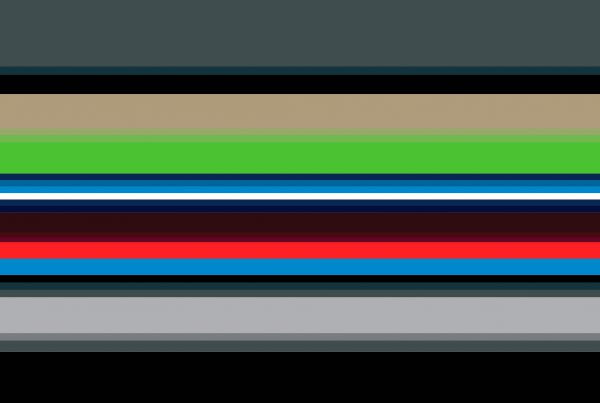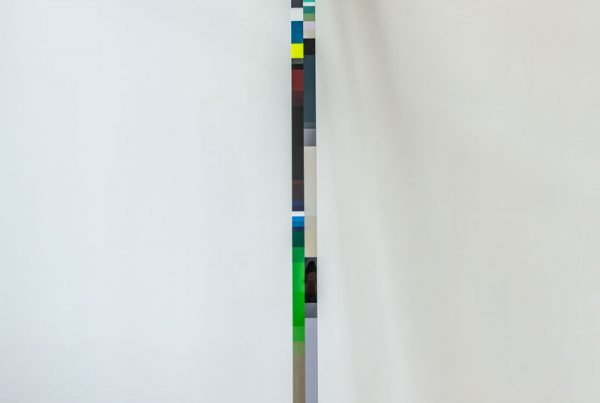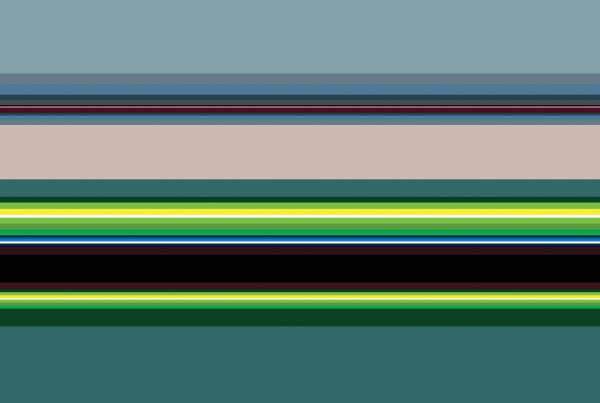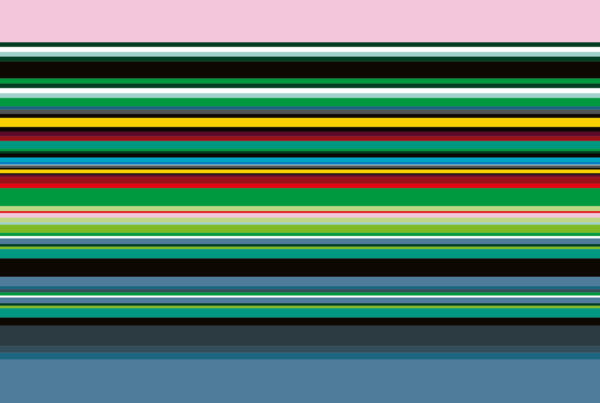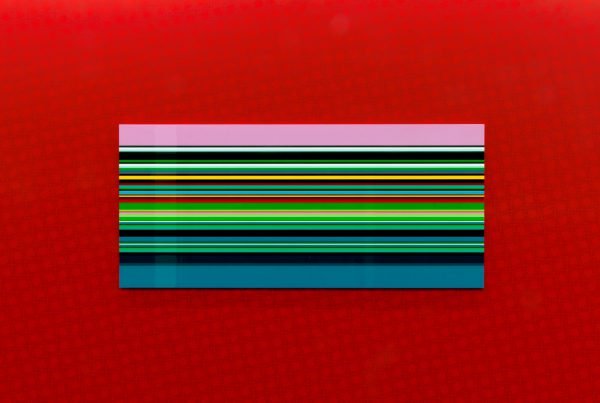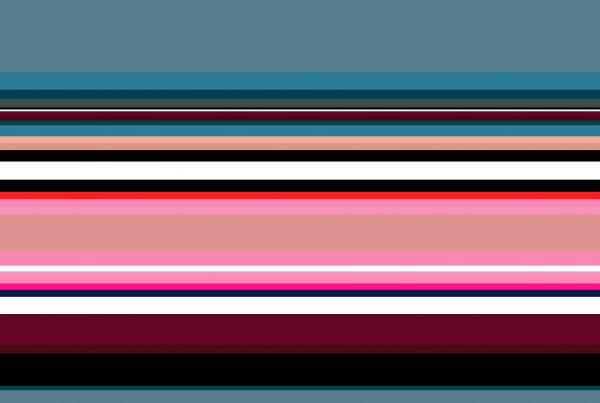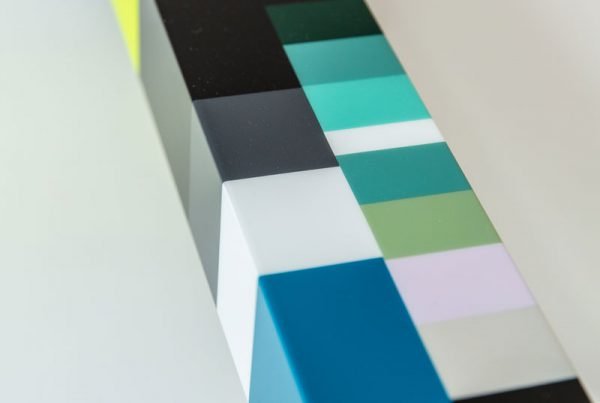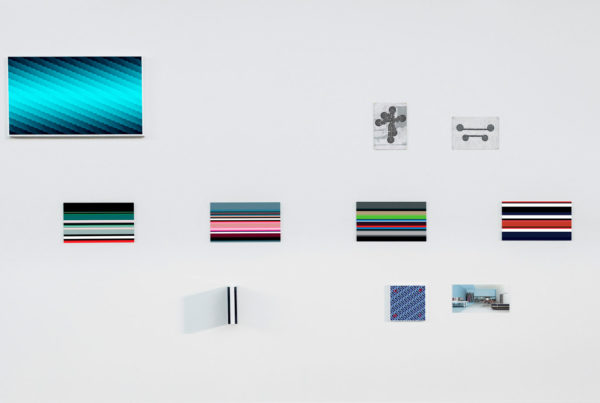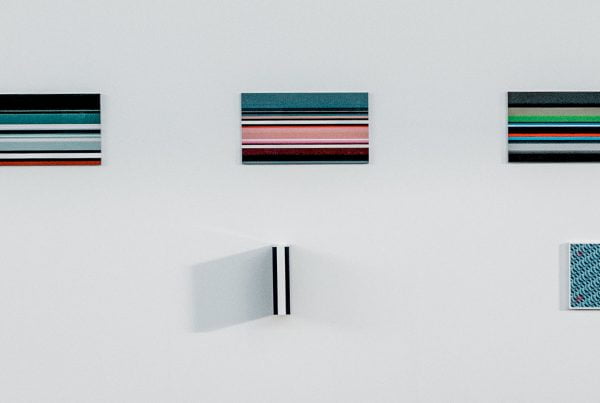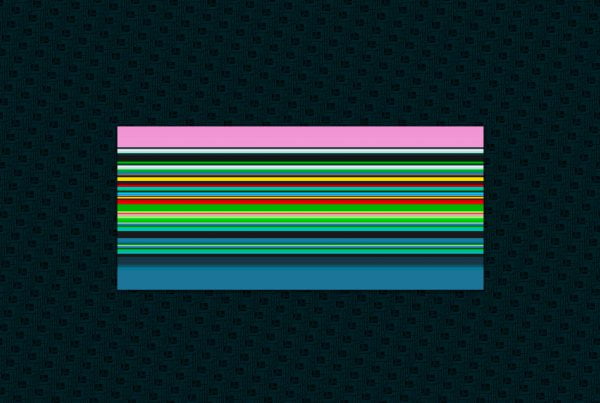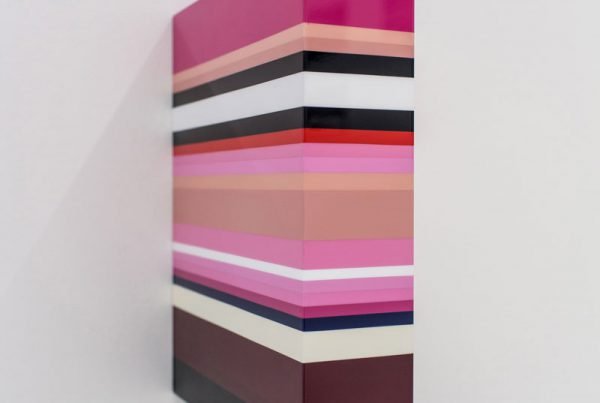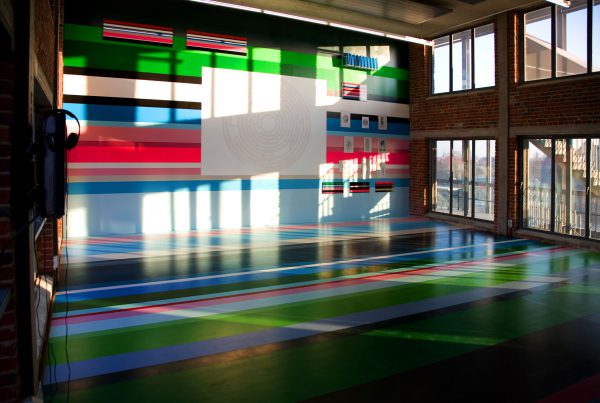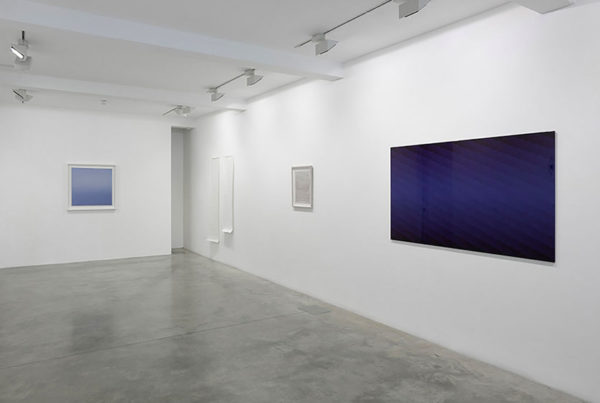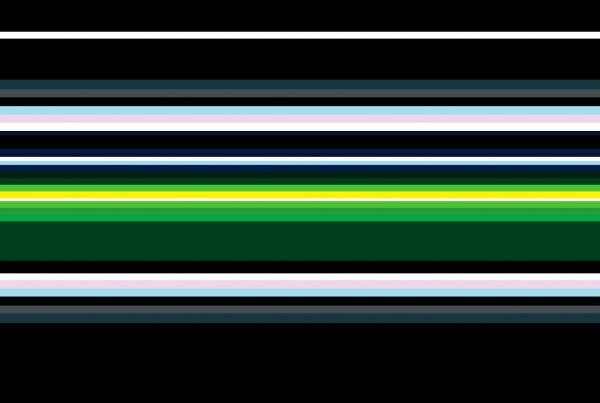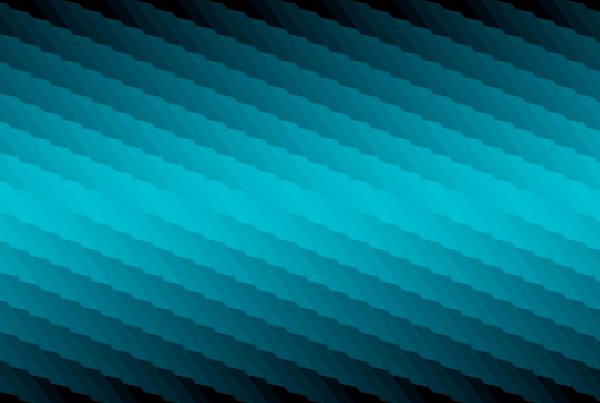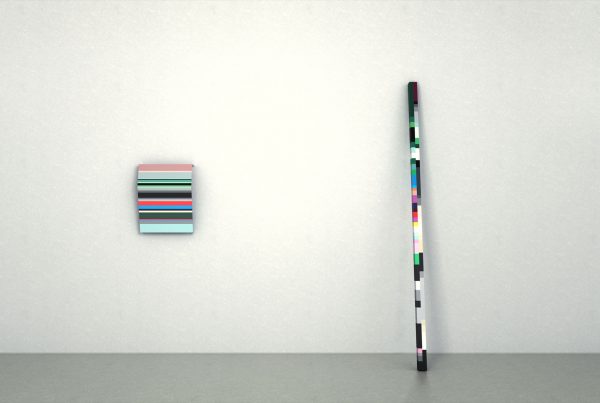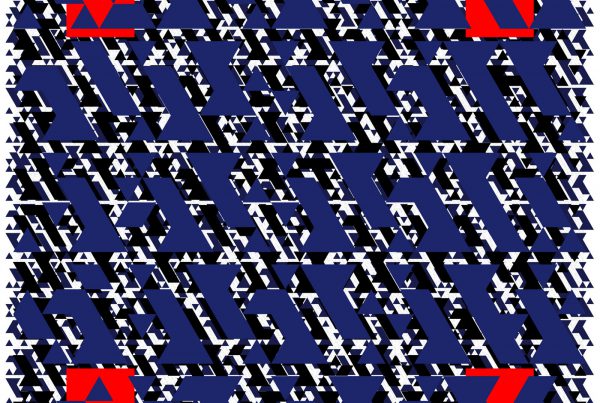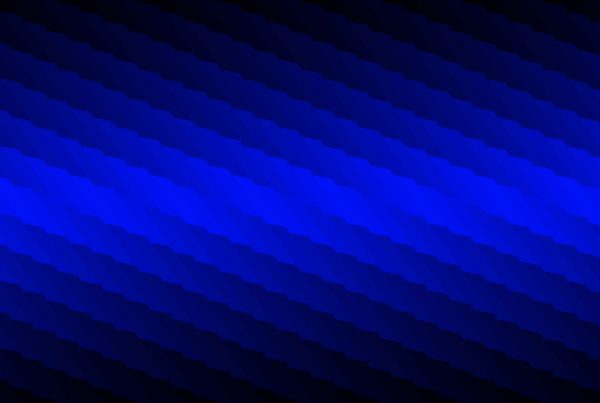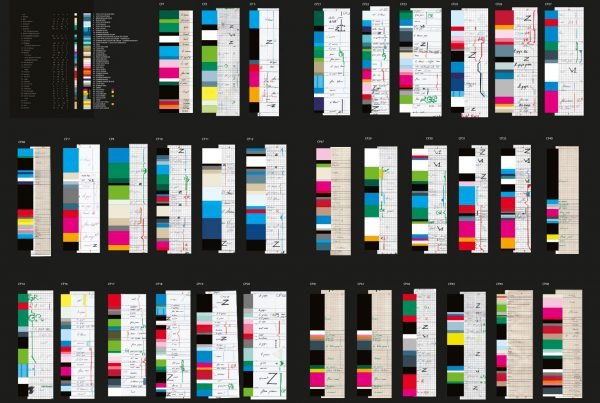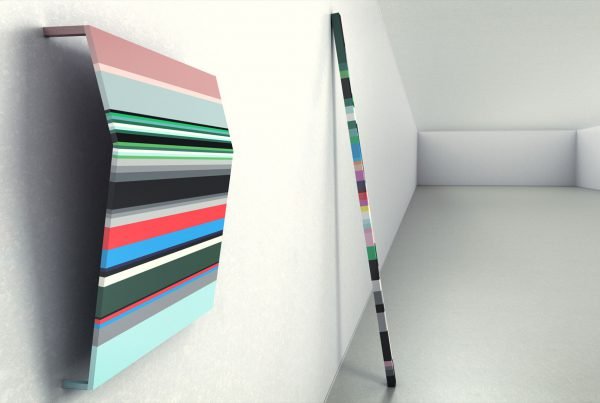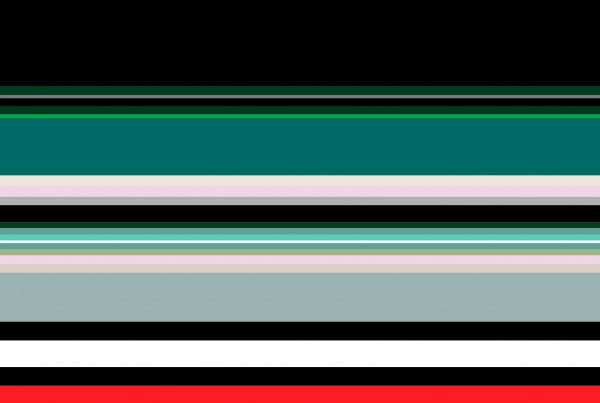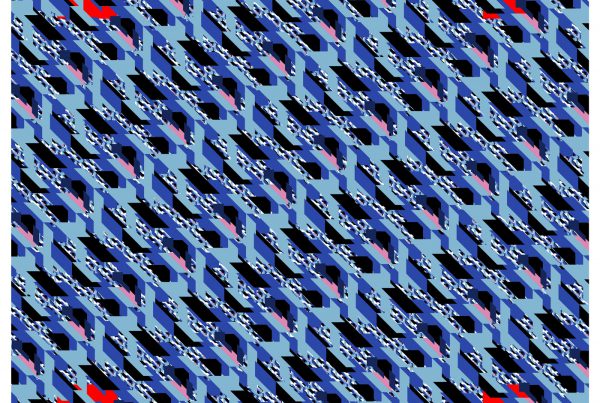Boy & Erik Stappaerts (BES) makes Conflict, Polarization Paintings and Noise Paintings without the classic act of painting. Why can’t a painter be someone who wants to become aware of the maximum potential of colors that can best “paint” themselves? The painter then plays the role of “color developer”, who helps color – whether it is a digital creation on the computer or a material mixture of dyes – to best approach its optimum “fullness”. The supernatural color saturation that characterizes the Paintings corresponds to the digital and industrial components of BES ‘precision work: computer prints based on digitally fine-tuned colors and all-covering body paint. The color print has the dual function of autonomous work of art and preliminary study of the pre-milled aluminum plate support that craftsmen patinate with high-tech sprayers to varnished lacquer painting, hard and glass like a mirror, purely without reading direction, relief or touch.
The composed rhythms of dissonant optical color effects are a reflection of the artist’s emotional “climate”. They form a (color image) language of affect that drags the viewer into a personal experience theater in which each color group acts as an “ethnic and ideological” entity with a range of “personalities” and “characters.” After all, within a color group there is a power structure between militant leaders and followers that is determined by variegated gradations within a color group. The turning points at which one color group touches another are the referees in the process of integration and conflict. In that sense, Conflict Paintings also depict social models that significantly deepen the meaning of the essentially abstract color studies.
If Conflict Paintings generate a sharp effect of tragic drama, the catharsis, then Polarization Paintings, BES’s second group of varnished lacquer paintings, appear to be a much more sensitive exercise of thinking and balancing. The gradually expanding horizontality exudes coordination and balance. The screaming conflict gives way to visual color fields that ebb in waves and thus represent polarization, whereby the gap between classes gradually increases, until the midfield fades completely and becomes a zero point. Polarization Paintings cause a more perceptually subtle awareness of tensions, but look for new order just like Conflict paintings.

